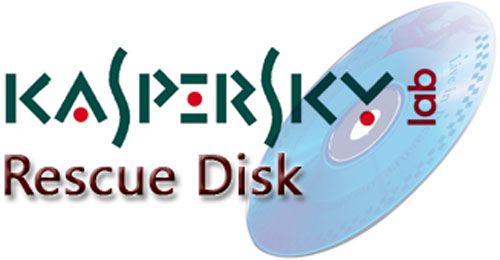

- #Kaspersky labs rescue disk archive
- #Kaspersky labs rescue disk Patch
- #Kaspersky labs rescue disk download
You should now have all the files like this print | cpio -owner 0.0 -quiet -H newc -o | lzma -zc > /tmp/rescue.igzĬopy kernel to same place as initramdisk cp /tmp/iso/boot/rescue /tmp

#Kaspersky labs rescue disk archive
This creates a lzma compressed cpio archive of /tmp/iso/new folder will take a few minutes as it is now containing the AV defs and main filesystemįind. Mksquashfs /tmp/iso/rescue /tmp/iso/livecd /tmp/iso/new/image.squashfs -noappend -all-root Inode table size 1398 bytes (1.37 Kbytes)ħ0.11% of uncompressed inode table size (1994 bytes)ĭirectory table size 58 bytes (0.06 Kbytes)ġ00.00% of uncompressed directory table size (58 bytes)Īdd the rescue folder and livecd file to a squashfs archive image.squashfs (yes this does contain the already squashed ext3 filesystem!) - these will then be packed back into a new rescue.igz 474/474 100%Įxportable Squashfs 4.0 filesystem, xz compressed, data block size 1048576Ĭompressed data, compressed metadata, compressed fragments, compressed xattrsįilesystem size 127846.50 Kbytes (124.85 Mbytes)Ģ6.34% of uncompressed filesystem size (485366.14 Kbytes) $ mksquashfs /tmp/iso/squashfs-root /tmp/iso/rescue/LiveOS/squashfs.img -noappend -comp xz -b 1048576 -all-rootĬreating 4.0 filesystem on rescue/LiveOS/squashfs.img, block size 1048576. Mksquashfs /tmp/iso/squashfs-root /tmp/iso/rescue/LiveOS/squashfs.img -noappend -comp xz -b 1048576 -all-root (Be mounted with root ownership of the enclosed files, hence need sudo) Mount -n -t $fstype -o $ $livedev /run/initramfs/liveĭie "Failed to mount block device of live image" losetup $_loop $_img _fs=$(det_fs $_loop) losetup -d $_loopįor arg in $CMDLINE do case $arg in ro|rw) liverw=$arg esac -62,7 +60,6 die "cannot mount live image (unknown filesystem type)" Using the Tab key, select Save and press Enter. Select a language for the graphical interface and press Enter on the keyboard.
#Kaspersky labs rescue disk Patch
$ patch -p0 -directory="/tmp/iso/new" < /tmp/iso/kaspersky.patch Press Esc on the keyboard when the message Press Esc to load Kaspersky Rescue Disk appears. Patch -p0 -directory = "/tmp/iso/new" < /tmp/iso/kaspersky.patch You can use Kaspersky Rescue Disk for scanning and disinfecting infected computers that cannot be disinfected using other methods (for example, with anti-virus applications). This file is updated daily with latest AV defs The rescue disk is a copy of Kaspersky Rescue Disk stored on a removable drive (a CD or USB device). Init: rescue.igz > image.squashfs > (rescue/bases & LiveOS/squasfs.img > ext3.img ) ext3.img real main filesystem (fixed) packed inside squashfs.img (recreated) & bases inside image.squashfs (created) inside rescue.igz (recreated) Repacking gives even more onion layers, the bit to get your head round. Real system: rescue/LiveOS/squasfs.img > ext3.img These are the patch files if you are rebuilding it yourself These are the pre-built patched PXE bootable Kaspersky 10 files ready to go! 13 Copy kernel to same place as initramdisk.8 Patch the init, sbin/dmsquash-live-root and.7 Mount the ext3 filesystem from extract squashfs.img.Rescue2USB 1.0.0.5 - a new utility from Kaspersky Labs, which writes the iso-image Kaspersky Rescue Disk 1910 on a USB-device. The effectiveness of treatment is enhanced by the fact that in the system are malicious programs do not get control at boot time. Set up booting from the USB media or CD/DVD drive. Connect the USB device to your computer or insert the CD/DVD drive. Write the Kaspersky Rescue Disk image to a USB drive or CD/DVD disk.
#Kaspersky labs rescue disk download
The program is used when the extent of infection, when it is not possible to cure your computer with antivirus programs or tools of treatment (eg, Kaspersky Virus Removal Tool), running under the operating system. Buy To boot under Kaspersky Rescue Disk: Download the Kaspersky Rescue Disk image. Kaspersky Rescue Disk 10 - Special program designed to scan and disinfect infected x86 and 圆4-compatible computers. Kaspersky Rescue Disk allows you to more effectively cope with the virus, as this disc does not require loading Windows, and therefore malicious programs will be inactive. Boot with the disk Kaspersky Rescue Disk, for that would detect and remove the infected computer malware and other threats without the risk of infecting other files and computers. Kaspersky Rescue Disk 10 - a boot disk that contains the scanner is Kaspersky Anti-Virus. The structure also includes the release Rescue2USB 1.0.0.5 and usage guide (Manual). In this release are the Kaspersky Rescue Disk with current updates on.


 0 kommentar(er)
0 kommentar(er)
